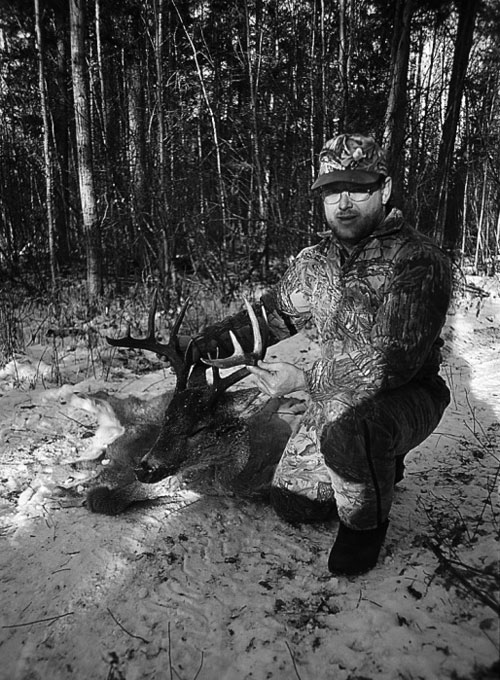 After 15 steady minutes of rumbling along the partially frozen Athabasca river bed, the eight-wheeled Argo shuddered and paused as it broke through the thin shoreline ice, down to the dry rock rubble half a foot below. It took a second to realize the river had indeed receded and wasn’t a threat, and that we weren’t stuck, but rather stalled intentionally. With the engine’s idling hum vibrating steadily in the frigid late-November Alberta air, from my back seat position I strained to see through the Argo’s clouded, heavy-plastic windows. Quickly I scanned the steep snow- and spruce-covered river banks that surrounded us for the reason for our stop; Was it a moose? Maybe a wolf?
After 15 steady minutes of rumbling along the partially frozen Athabasca river bed, the eight-wheeled Argo shuddered and paused as it broke through the thin shoreline ice, down to the dry rock rubble half a foot below. It took a second to realize the river had indeed receded and wasn’t a threat, and that we weren’t stuck, but rather stalled intentionally. With the engine’s idling hum vibrating steadily in the frigid late-November Alberta air, from my back seat position I strained to see through the Argo’s clouded, heavy-plastic windows. Quickly I scanned the steep snow- and spruce-covered river banks that surrounded us for the reason for our stop; Was it a moose? Maybe a wolf?
“There she is,” bellowed driver/outfitter Ron Bateman, satisfied we’d gone far enough for a good look. He waved his arm, pointing up ahead and to the left. “That point there is an ancient Indian burial ground. Last year, just across from here, I shot at a big black wolf that I surprised making its away across the river ice. He saw me and just took off. He was motoring, that bugger. Missed him clean with a .243. A little further ahead is the buck.”
“The buck” was a fresh wolf kill, maybe a day or two old. As we climbed out to take a closer look, I imagined the deer—what appeared to be the sparse remnants of a healthy 6-pointer—being herded to the brushy point, while perhaps, a few members of the pack waited there in ambush. That this was big, wild country was instantly hammered home.
With my first day’s tour of the local neighborhood complete, I climbed back into the Argo with Bateman and his head guide Kelly Sawchuck, and we drove slowly back to camp. Earlier in the day, during the 35-mile off-road Argo trek to camp, we’d seen three wolves cross the trail ahead of us. It was then I knew I wouldn’t be alone in my quest for an outsized Alberta whitetail; now, I had seen the physical proof.
Despite this new and rather unseen “challenge,” I was more than confident of my upcoming hunt. Not of killing or even seeing a big buck, you understand—I’ve bowhunted long enough to know those types of things can’t be banked on no matter what the situation. No, my confidence lay in the knowledge that I’d come prepared with the right gear and knew that if my hunt came down to an endurance test, I’d be able to meet the challenge and stay on stand as long as needed. Or, at least, until my week-long hunt was over.
Wearing The Right Stuff
Preparation for my Alberta adventure had begun months before with the perusing of catalogs offered by companies skilled in the design of extreme cold-weather gear. As you’ll recall, the late fall/winter of 2000 ended up bringing the first “real” winter weather the Midwest had seen in more than three years. Quite frankly, even late-season bowhunting over those three previous seasons had been pretty mild, and I knew my wardrobe wasn’t up to snuff.
Packing the right clothing is crucial in Alberta and other Canadian provinces harboring remote stretches of whitetail habitat because of three factors:
1. The severity of the weather during the rut (which can and often does dip below zero degrees Fahrenheit).
2. The preferred inactive hunting method (treestands).
3. The behavior of the whitetails found in these remote, far-north locations.
Unlike heavily hunted areas in The States, peak activity for big woods whitetails is typically from late morning through early afternoon—but you can expect periods of hot action at any time during the day. Translation: The longer you can stay on stand, the better your chances for success.
Next: Warm Shelter, Dependable Transport; Encounters, But Not Close Enough






